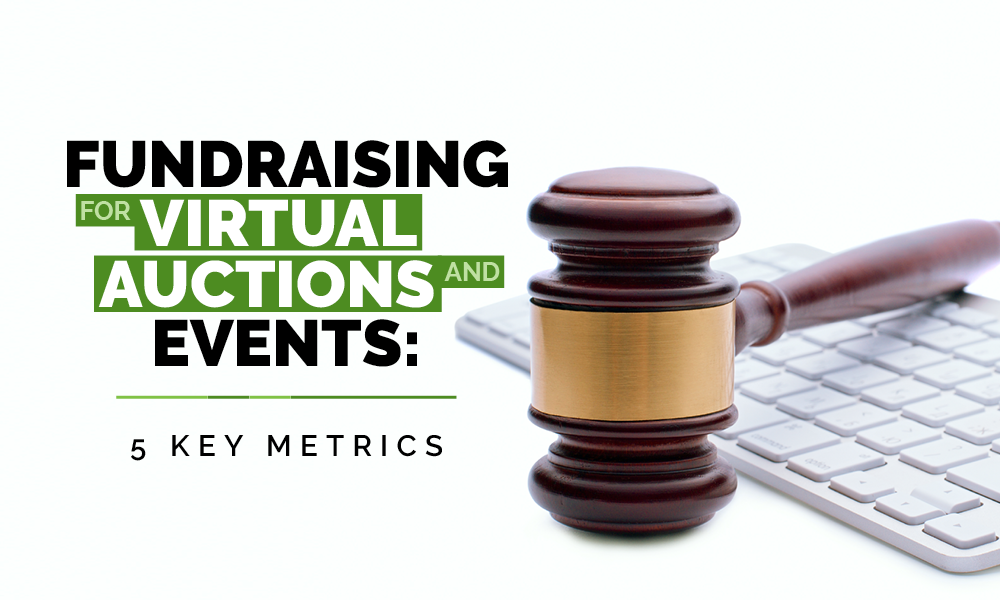Virtual events have recently experienced a meteoric rise—and for good reason. Whether you’re hosting a themed gala, mobile auction, or educational conference, virtual events offer a global audience reach at a fraction of the cost. Better yet, they give you the ability to measure event success directly from the tools you used to host it.
To make the most of your fundraising data, you must define and track the metrics most important to your fundraising success. That’s why we created this guide! Let’s review five key metrics you should track and discuss how to use them to enhance your future events.
1. Guest Retention
The number of event attendees who continue engaging with your nonprofit after an event shows how effectively your organization creates connections with supporters. Monitor guest retention rates by:
- Using your CRM. As CharityEngine’s fundraising platform guide explains, the best CRMs combine fundraising and donor management into one system for a complete suite of tools and centralized data. A comprehensive CRM should offer event tools to help your nonprofit automatically collect event attendance data, manage any volunteers, and provide a self-service portal for supporters.
- Sending guests surveys. Surveys are the most straightforward way to understand why your guests attend (or don’t attend) events. Ask survey questions about what guests enjoy about events and what can be improved. For example, what did they think about the raffle basket at your recent event? Did they enjoy
- Creating customized messages. Acknowledging a guest’s attendance at your event makes them feel appreciated and can encourage them to come back for your next fundraiser. Reference previous events guests attended or auction wins and send personalized emails inviting them to similar future events you have planned.
Retaining guests also helps your nonprofit build long-term relationships with supporters. While attracting new supporters is also beneficial, increased donor retention helps build a reliable support base that your nonprofit can count on to attend and spread the word about your next event.
2. Average Bid
If your nonprofit hosts an online auction, tracking average bid amounts relative to item market values is key to maximizing revenue. Bids are influenced by more than just perceived item worth—your starting bids and bid increments are crucial in driving engagement and competition.
Setting bids too high or too low can hinder fundraising potential. Handbid’s silent auction guide recommends starting bids at 30-40% of market value and using low minimum bid increments to encourage bidding wars. Ideally, nonprofit auctions should aim for 10-14 bids per item to maintain momentum. High bid increments can deter participation, while excessively low starting prices risk items selling for below-market value, reducing overall revenue.
To further optimize your auction, consider adding buy-it-now options for select items. Pricing these almost twice market value allows guests to purchase immediately, ensuring strong returns. However, use this strategy selectively—lower-value items may benefit from a buy-it-now price, while high-value items could lose potential earnings if bidding wars end prematurely.
By carefully structuring bids and pricing strategies, your nonprofit can maximize both participation and fundraising success.
3. Marketing Engagement
Your event’s marketing strategy determines the number of guests who attend, but not all communication channels are equally effective. Understanding where your outreach efforts are most successful will help refine future campaigns and ensure maximum engagement.
Marketing engagement can be measured through a few key performance indicators (KPIs). Web analytics tools can determine many of these metrics, so make sure your website is set up to collect data.
Platform Response Rates by Channel
- Email Engagement: Measure email open rates to see if your content is appealing. Here’s the formula:
- Email Open Rate (%) = (Opened Emails/Delivered Emails) x 100
- Social Media Engagement: Track likes, shares, comments, and click-through rates to identify which posts resonate with your audience. Here’s how to measure:
- Engagement Rate (%) = (Total interactions/Total Followers) x 100
- Direct Mail: Measure how many people respond to the call to action on a direct mail piece.
- Response Rate (%) = (Responses/Total Number of Pieces Sent) x 100
- Phone Call: Similarly, track how many people commit to attend the event after receiving a phone call.
- Call Conversion Rate (%) = (Confirmed Attendees from Call/Total Calls Made) x 100
Other Key Metrics to Track
- Click-Through Rate (CTR): This measures how effective your messages are by noting the rate at which readers take action.
- CTR (%) = (Clicks on Links/Total Message Views) x 100
- Conversion Rates: Tracks how many people take the intended action, such as registering for your event.
- Conversion Rate (%) = (Registrations/Total Invitations Sent) x 100
Make sure your team is tracking all of these indicators to identify trends in your data rather than collecting data for only one or two metrics. For example, a low conversion rate alone only tells your nonprofit that something in your marketing campaign needs to change. When paired with low click-through rates on one of your major communication channels, you can begin to make more targeted improvements.
4. Attendance Format
Keep in mind that virtual events don’t always mean the event occurs strictly online. Hybrid and concurrent events can result in participants attending in various ways. For example, perhaps some guests attend your auction in person while others bid from their mobile devices. Or, maybe you’re hosting a text-to-give fundraiser concurrently with your golf tournament so that even non-golfers can participate.
As nonprofits navigate in-person, virtual, and hybrid events, tracking attendance format data helps optimize engagement and maximize participation. The following key metrics can provide insight into how different event types perform.
- Guest Attendance Format tracks attendees’ participation–in-person, virtually, or hybrid. There are several ways to measure this:
- Use event registration forms and ask guests to select their preferred attendance format.
- Track check-ins at the physical location through tickets or sign-in sheets.
- Engagement Rate by Attendance Format will show whether attendance was higher in person or virtually.
- Track participation in Q&A sessions, chat engagement, poll responses, or even auction bidding.
- Interactivity Rate (%) = (Total Engagement Actions/Total Attendees) x 100
- Geographical Distribution of Attendees analyzes where attendees are located, helping you measure the reach of virtual and hybrid events.
- Collect zip codes or counties on your registration form.
- Use IP tracking from event platforms if your event is virtual.
Also, remember to consider your volunteers and how they prefer to lend support. Like your guests, some volunteers may be geographically distant and prefer to help out virtually. Measuring in-person and online registration rates will also help your volunteers by allowing your nonprofit to staff your venue and live chat with adequate volunteers.
5. Volunteer Retention
Events require extensive preparation, and volunteer recruitment is a significant component of event planning. Tracking your volunteer retention rate can save your event team time sifting through registrations and improve your nonprofit’s connections with volunteers.
Volunteers lend their time to your nonprofit for all sorts of reasons. However, you can still gain general insights from your volunteers by monitoring your retention rate and outright asking them what they do and don’t like about working at your events.
Volunteer Retention Rate measures the percentage of volunteers who support your nonprofit over time. High rates indicate a strong volunteer experience, while low rates might cause you to examine engagement, recognition, or organization issues.
Here’s the formula: Volunteer Retention Rate (%) = (Returning Volunteers/Total Volunteers from the Previous Period) x 100. So, if you had 200 volunteers last year and 120 returned this year, your retention rate would be 60%.
Building long-term relationships with your volunteers benefits your nonprofit beyond simply reducing the time spent recruiting replacements. For example, retaining volunteers can open opportunities for volunteer grants—donations made by corporations when their employees complete a set number of volunteer hours. Or, volunteers may commit to recurring gifts instead of repeatedly signing up for volunteer shifts.
Metrics provide valuable insight into your nonprofit’s success and areas for growth. Analyzing data trends allows you to identify opportunities to improve and uncover strategies to enhance future events. However, data alone won’t drive change—be sure to act on your findings by developing data-driven plans that turn insights into impact.




